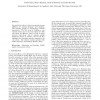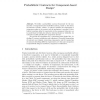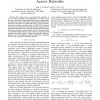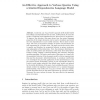20 search results - page 3 / 4 » The How and Why of Interactive Markov Chains |
AGENTS
2000
Springer
13 years 9 months ago
2000
Springer
Our goal is for robots to learn conceptual systems su cient for natural language and planning. The learning should be autonomous, without supervision. The rst steps in building a ...
ATVA
2010
Springer
13 years 6 months ago
2010
Springer
Abstract. We define a probabilistic contract framework for the construction of component-based embedded systems, based on the theory of Interactive Markov Chains. A contract specif...
KDD
2003
ACM
14 years 5 months ago
2003
ACM
Large and complex graphs representing relationships among sets of entities are an increasingly common focus of interest in data analysis--examples include social networks, Web gra...
WCNC
2010
IEEE
13 years 9 months ago
2010
IEEE
—This paper aims at answering the questions of how to enable cooperative communications in random access networks. And, since cooperation introduces extra transmissions in the ch...
ICTIR
2009
Springer
13 years 3 months ago
2009
Springer
Intuitively, any `bag of words' approach in IR should benefit from taking term dependencies into account. Unfortunately, for years the results of exploiting such dependencies ...




